Ultra-fine grinding of non-metallic minerals
Non-metallic mines, metal mines, and fuel mines are called the three pillars of the materials industry. The use of non-metallic minerals depends on the degree of deep processing, including ultra-fine grinding, ultra-fine grade, fine purification and surface modification, among which effective ultra-fine grinding is the prerequisite and guarantee for various deep processing. The ideal ultra-fine powder should have the characteristics: particles as small as possible, no agglomeration, narrow particle size distribution, spherical particles as much as possible, uniform chemical composition, etc.
Due to the wide variety of non-metallic minerals, various requirements are put forward on the particle size distribution and purity of crushed products according to their different uses. The development of ultra-fine grinding technology must adapt to its specific requirements. Generally speaking, the requirements for non-metallic minerals are as follows:
- Fineness
The application of non-metallic mineral products requires a certain degree. For example, kaolin and heavy calcium carbonate as papermaking raw materials require a product fineness of -2μm accounting for 90%, whiteness >90%; high-grade paint filler heavy calcium carbonate powder fineness of 1250 Mesh; zirconium silicate as a ceramic opacifier requires an average fineness of 0.5~1μm; wollastonite as a filler also requires its fineness to be less than 10μm and so on.
- Purity
The purity requirement of non-metallic mineral products is also one of its main indicators, which means that no pollution should be allowed during the grinding process, and the original composition should be maintained. If it is white minerals, a certain degree of whiteness is required. For example, the whiteness of calcined kaolin and talc used in papermaking is required to be ≥90%, and the whiteness of heavy calcium carbonate used in papermaking coatings, fillers and high-grade paint fillers is greater than 90%. Wait.
- Powder shape
Some non-metallic mineral products have strict requirements on their shapes to meet different needs. For example, wollastonite used for composite reinforcement, its ultrafine powder is required to maintain its original needle-like crystal state as much as possible, so that wollastonite products become natural short fiber reinforced materials, and its aspect ratio is required to be >8~10.
The application fields of ultra-fine powder materials account for 40.3% in the mechanical field, 34.6% in the thermal field, 12.9% in the electromagnetic field, 8.9% in the biomedical field, 2.4% in the optical field, and 0.9% in other fields.
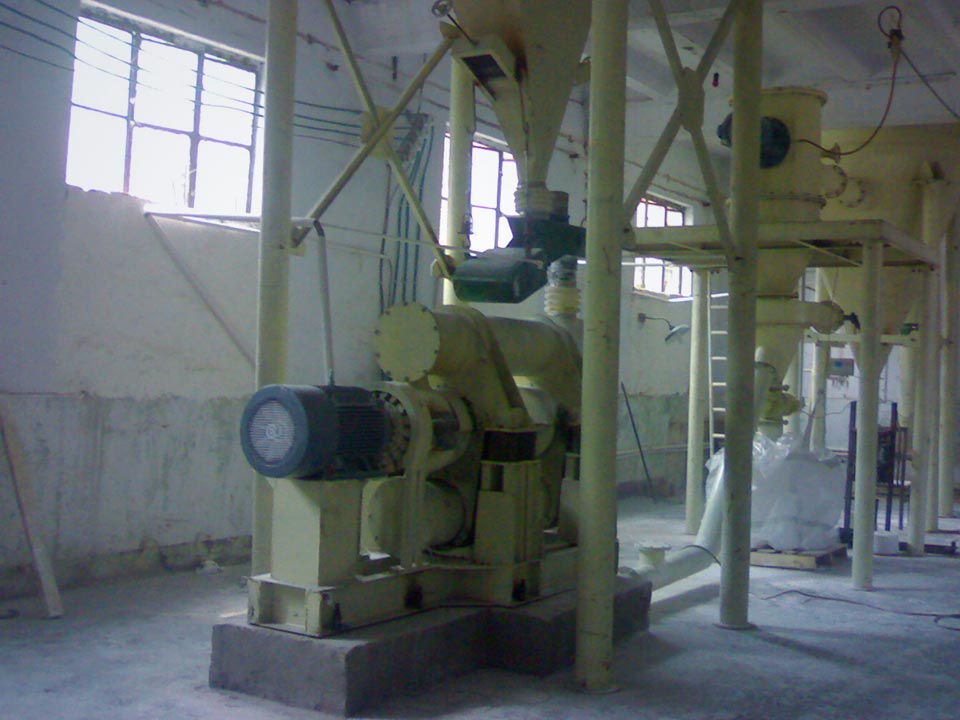
Non-metallic mineral ultra-fine grinding method
Crushing is different from the destruction of a single material. It refers to the effect on the group, that is, the crushed material is a group of particles with different sizes and shapes.
There are two main methods for preparing ultrafine powder from the principle of preparation: one is chemical synthesis; the other is physical grinding. Chemical synthesis is through chemical reaction or phase transformation, the powder is prepared from ions, atoms, and molecules through crystal nucleus formation and crystal growth. Due to the complex production process, high cost, and low yield, the application is limited. The principle of physical grinding is to grind materials through the action of mechanical force. Compared with chemical synthesis methods, physical grinding has lower cost, relatively simple process, and large output.
Advantages of mechanical grinding method: large output, low cost, simple process, etc., and mechanochemical effects are generated during the grinding process to increase the activity of the powder; disadvantages: the purity, fineness and morphology of the product are not as good as the ultra-fine powder prepared by chemical method body. This method is suitable for large-scale industrial production, such as deep processing of mineral products.
Non-metallic mineral ultra-fine grinding equipment
At present, the main method for preparing ultra-fine powder materials is physical grinding. Therefore, ultra-fine grinding equipment mainly refers to various grinding-related equipment that mainly produces ultra-fine powder by mechanical methods. Commonly used ultrafine grinding equipment includes jet mill, mechanical impact mill, vibration mill, stirring mill, colloid mill and ball mill.
| Equipment type | Feeding size/mm | Product fineness d97/μm | Grinding principle |
| Jet mill | <2 | 3~45 | Impact, collision |
| Mechanical impact grinding | <10 | 8~45 | Blow, impact, shear |
| Rotary mill | <30 | 10~45 | Impact, collision, shear, friction |
| Vibration mill | <5 | 2~74 | Friction, collision, shear |
| Stirring mill | <1 | 2~45 | Friction, collision, shear |
| Drum Ball Mill | <5 | 5~74 | Friction, impact |
| Planetary ball mill | <5 | 5~74 | Friction, impact |
| Grinding and peeling machine | <0.2 | 2~20 | Friction, collision, shear |
| Sand mill | <0.2 | 1~20 | Friction, collision, shear |
| Roller mill | <30 | 10~45 | Squeeze, friction |
| High pressure homogenizer | <0.03 | 1~10 | Cavitation, turbulence, shear |
| Colloid mill | <0.2 | 2~20 | Friction, shear |
- High-speed mechanical impact mill
High-speed mechanical impact crusher refers to the use of rotating bodies (rods, hammers, blades, etc.) rotating at a high speed around a horizontal or vertical axis to apply a violent impact on the feedstock, causing it to collide with the fixed body or particles, thereby making An ultra-fine grinding equipment for particle grinding.
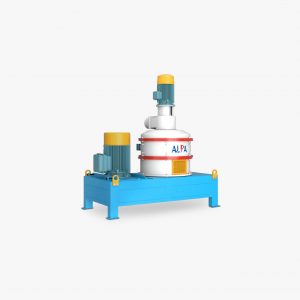
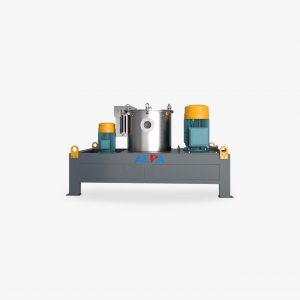
Advantages: large crushing ratio, adjustable fine powder particle size, simple structure, easy operation, less supporting equipment, compact installation, less floor space, large capacity, and high efficiency.
Disadvantages: high-speed operation makes overheating and component wear unavoidable.
It is suitable for the production of superfine powder of medium hardness materials such as calcite, marble, chalk and talc.
- Jet mill
Jet mill is also called jet mill or energy flow mill. It uses the energy of high-speed airflow (300-500m/s) or superheated steam (300-400℃) to cause particles to collide, collide and rub each other, thereby causing solid materials to grind. Mainly include: flat jet mill, circulating jet mill, opposite jet jet mill, rake jet mill, fluidized bed jet mill, etc.
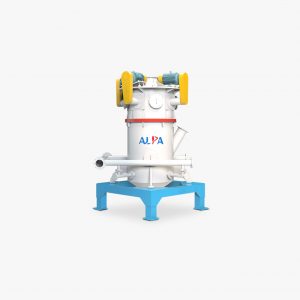
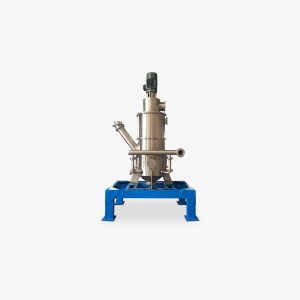
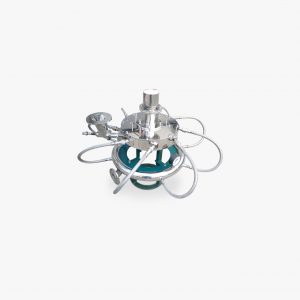
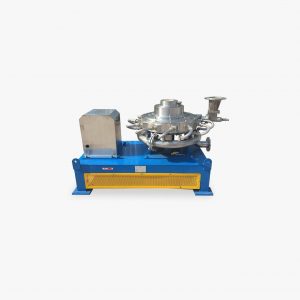
The jet mill pulverization ratio is generally 1-40, and the product fineness d can generally reach 3-10μm. The product is less contaminated and can be operated in a sterile state. It is suitable for pulverizing low-melting and heat-sensitive materials and biologically active products. The production process is continuous, the production capacity is large, and the degree of self-control and automation is high.
Disadvantages: Jet mill is currently the most researched ultrafine grinding equipment with the most complete models and relatively mature technology. It also has the following shortcomings: large-scale, specialized production of high purity, high fineness products, high cost, high energy consumption, The machining accuracy is difficult to reach sub-micron products, and the material is worn out. Jet mills are widely used for ultrafine grinding of non-metallic minerals, chemical raw materials, health foods, rare earths, etc., such as talc, marble, kaolin, and other non-metallic minerals below medium hardness.
Vibration mill is an ultra-fine grinding equipment with a ball or rod as the medium. The processed product can be as fine as a few microns. It is widely used in building materials, metallurgy, chemical industry, ceramics, glass, refractory materials and non-metallic minerals and other industries. Powder processing.
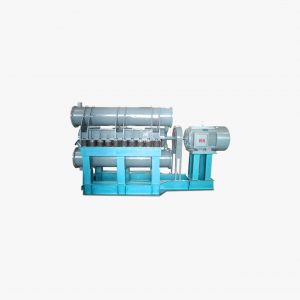
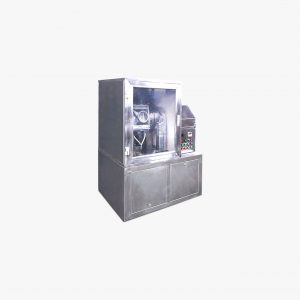
Advantages of vibration mill: compact structure, small size, small quality, simple operation, convenient maintenance, low energy consumption, high output, uniform product size, disadvantages: large noise, large-size vibration mill has high technical requirements for springs, bearings and other machine parts .
The development trend of ultra-fine grinding equipment
(1) Improve product fineness and reduce equipment grinding limit;
(2) Increase the output of a single machine and reduce the energy consumption per unit of product;
(3) Reduce abrasion;
(4) High stability and reliability;
(5) Online control of product fineness and particle size distribution;
(6) Efficient, fine and large grading equipment;
(7) Ultra-fine grinding equipment for special grain and tough materials.
Article source: China Powder Network
